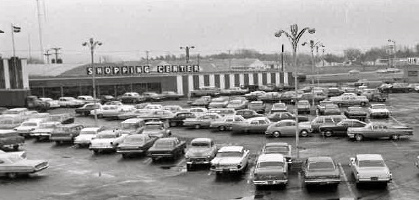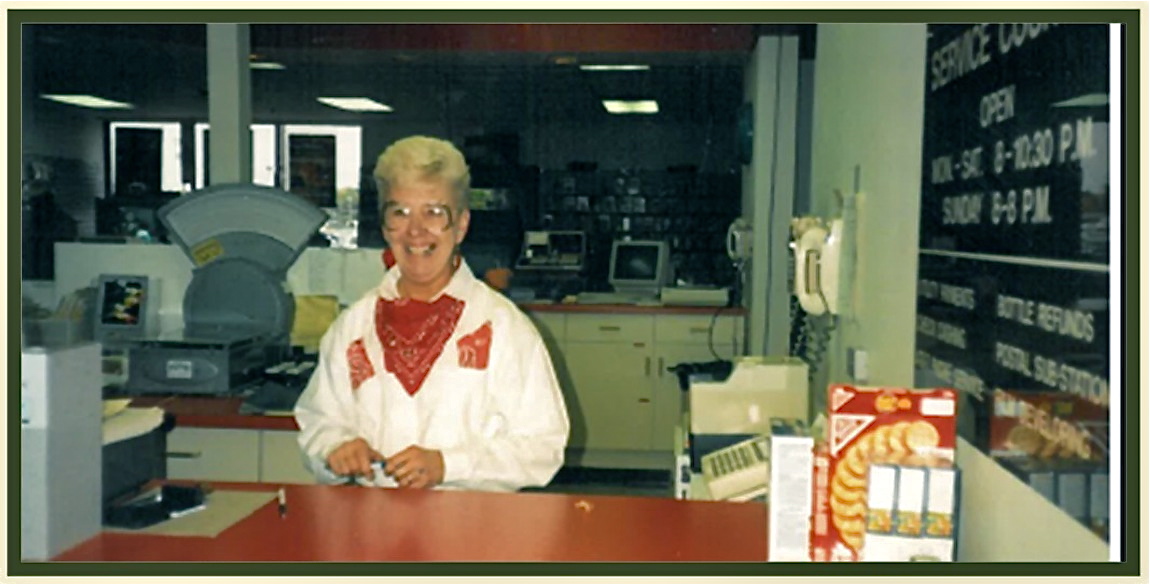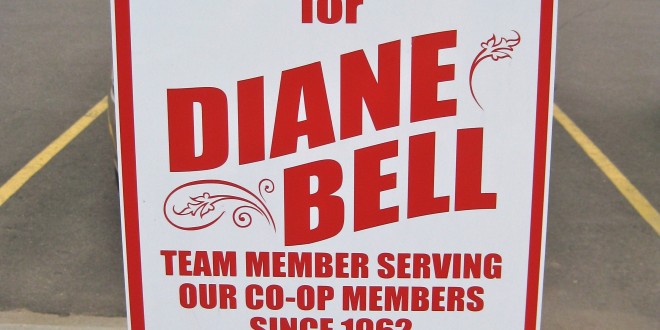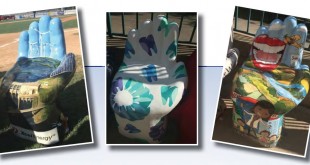By Vicki Larkowski
 The Great Depression triggered a wave of co-op organizing across our nation. One leading co-op launched during this period was the Consumers Cooperative Association of Eau Claire—“the Co-op.” The Co-op’s first purchase for its members was a carload of coal in 1935. Subsequent ventures included a gas station and, by 1953, a grocery store. From there, the Co-op Shopping Center continued to flourish on South Hastings Way. It became the only place in the region that “had it all”—from groceries to clothing, jewelry, and more.
The Great Depression triggered a wave of co-op organizing across our nation. One leading co-op launched during this period was the Consumers Cooperative Association of Eau Claire—“the Co-op.” The Co-op’s first purchase for its members was a carload of coal in 1935. Subsequent ventures included a gas station and, by 1953, a grocery store. From there, the Co-op Shopping Center continued to flourish on South Hastings Way. It became the only place in the region that “had it all”—from groceries to clothing, jewelry, and more.
In 1962, a married mom with two children and no car needed a job. Her work options were to take the bus or find a workplace walking distance from home. Diane Bell chose the latter, interviewed at the Eau Claire Co-op, and got the job—at the customer service desk. Before long, Diane was managing the very busy desk—usually with about 14 customer service employees—and its licensed US postal substation.
In 1963, the Chippewa Valley’s first big box retailer hit Eau Claire: Kmart was a big deal for the Chippewa Valley, and it gave the Co-op some serious competition. But Diane and her customer service team found ways to maintain their fantastic service edge. One way was to process payments for utility companies such as NSP[1]. And the Co-op extended their evening and weekend hours.
Back then, Uniroyal and the paper mill were major manufacturers in Eau Claire. (Diane’s father worked for Uniroyal for 40 years.) To attract business from those employees, the Co-op customer service desk would pay customers to cash their checks—a whole nickel. Diane says, “Today we avoid check cashing, but it was a huge draw back then.” They also offered Indianhead stamp booklets—similar to S&H green stamps but unique to the Co-op. Each full booklet of stamps was worth one dollar to the customer. Later, they tried the green coin system: When customers cashed their paychecks at the Co-op, they’d get a green coin for every $100 cashed. The coins could be used like cash throughout the store. “It worked!” reports Diane.
As Eau Claire’s tire and paper industries changed through the years, workers moved out of the community, and the Co-op lost those regular customers. Yet, as it always has, the Eau Claire community adapted. In response to these changes and ever-increasing competition, the Co-op scaled back various departments. The sporting goods and hardware departments stayed strong, while other departments disappeared and the big cafeteria was pared down to a little café.
Ultimately, in 1984, almost all of the Co-op employees were let go. The grocery department moved first (to a nearby building that was only torn down in recent years). Diane stayed at the Co-op service desk until the doors closed in October.
Diane has many fond memories of the Eau Claire Consumers Co-op and her time working for Ray Theisen and Larry Weyker. For example, she recalls how Don Rust, from the meat department, would give a cold hot dog to each child who came by his meat order window. Diane has only one less-than-fond memory. On one occasion, the Co-op received a bomb threat. “The building was evacuated,” explains Diane, “but we service desk ladies had to stay behind and check all the mailbags. That was a little scary. Fortunately, it was a false alarm.”
 But Diane’s story doesn’t end there.
But Diane’s story doesn’t end there.
After seeing the Co-op’s doors close, Diane embraced the opportunity to join the transplanted grocery department and build their service desk. Diane worked closely with Sue Mueller, who ran the front end of the new supermarket: Mega Foods. They continued the postal substation there and, through the years, offered additional services such as video rentals, a floral department (still available), and AT&T telephone outlet services complete with blue, pink, and red wall phones and table phones. Mega generated stories, too. For example, one day the sprinkler system went off over the platformed service desk. “Everything got wet, including all the money and postage stamps. We had to run clotheslines to dry it all out,” recalls Diane.
Today, Diane is still the service desk manager alongside eight other service desk employees at Mega Foods East. She has watched Mega Foods continue to expand, including the addition of Mega Foods West and 17 gas stations. Diane worked at the Co-op for 22 years and has been with Mega for another 30 years. This August, she begins her 53rd year of service.
What does Diane love about her job?
I love people the most. We have great customers. I see people from school and old friends that I wouldn’t see at home. And my team members like me. People ask for my opinion. Because I’ve been here so long, I have a lot of ideas about what is best for the customers. I am fond of all of them . . . I just love my job.
From behind the customer service counter, Diane has seen a lot of families grow up. College students who worked with her years ago are now retired. She even has a family member following in her Mega footsteps.
My grandson started at Mega Foods in high school. Now he’s two years out of college and he’s been the grocery manager at Mega West for six months. He loves it and they love him. I am very proud of him—although I did tell him he didn’t have to keep it in the family.
And what are her thoughts on retirement?
I do realize I’m lucky to be healthy enough to work. At work, I’m moving all day, interacting with people. I’ve talked to many retired people who’ve chosen to go back to work part-time—or they want to. And most of us find we don’t have the funds to do all the things people dream of about retirement. I lost my husband two years ago. He was sick for four years. After his death, I really didn’t want to be at home, and I didn’t have the funds to travel the world. Then after my breast cancer surgery in October 2012, I knew getting back to work would be a good thing. Working is healthy; sitting home isn’t the best thing.
Unlike when she started all those years ago, Diane no longer walks to work; she has a car now. For her 50 years of service, Diane was awarded her own parking spot, complete with a sign by the Mega East main door. Through time, many things have changed at the 1100 block of South Hastings Way, but much has stayed the same. Diane explains how—unlike many companies that needed an evolution of women’s workplace status—women have always been treated fairly by her employer: “There really isn’t a big difference in the way women have been treated here or how they’ve worked here.” What a testament to the respect of her Co-op and Mega family! No wonder Diane has chosen to stay onboard for half a century. So, if you happen to be strolling through Mega East anytime soon, be sure to give Diane a nod and a smile . . . know that she’s uncompromisingly committed to the Mega community while she enjoys the camaraderie of both her team members and you as a customer . . . and know that the cart wranglers will be keeping an eye on her parking spot.
[1] Northern States Power Company
Photos courtesy of Mega Co-op
 Chippewa Valley 5ive for Women The Chippewa Valley’s Premier Magazine for Women!
Chippewa Valley 5ive for Women The Chippewa Valley’s Premier Magazine for Women!











